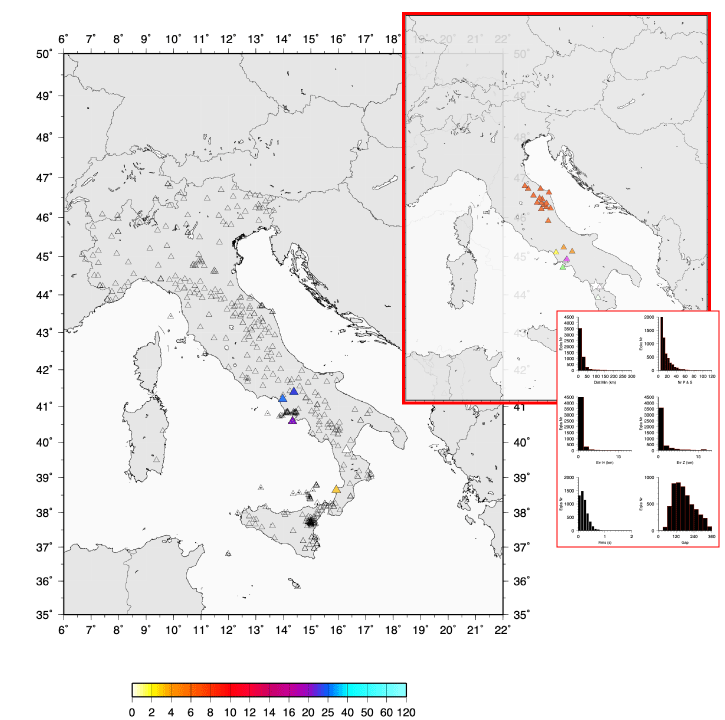Since 2018, the CSI updates concern only the dataset of the integrated phases of the Italian networks and therefore the CSI as a catalog of absolute localizations has become CLASS 1.0, where locations are produced based on a probabilistic location method (NonLinLoc) in a 3D earth velocity model.
At present the CSI1.1/PHS integrated phase data-set has been updated to CSI2.0/phases (1981-2008) and is accessible through the top menù "Phases" of the present website, in a custom txt format. Under the top Menù voice "Stations" also the complete list of the seismic stations, with geographic coordinates, for the entire period (1981-2008 and beyond) is available. The catalog is accessible as yearly files phs format (similar to Hypo71 phs format) and each event phases association is labeled with the earthquake location parameters and ID of CLASS1.0 absolute location catalog.
Important note about the stations: the seismic stations evolved in time, both for what concerns the stations code and the affiliation network. Also, the geographic coordinates precision and error reduction changed in time. Thus different names/networks and slightly different coordinates can belong to a same seismic site. For this reason we decided to create the same alias for different codes in time a space with the leading condition that they are located within 500m from each other. Each line of the file reports the alias, the mean coordinates, standard deviation on lat, lon, elevations, the original station/network code and coordinates and, in some cases, the estimated google maps elevation for that stations.
The phases files and the stations file are fully compatible.



